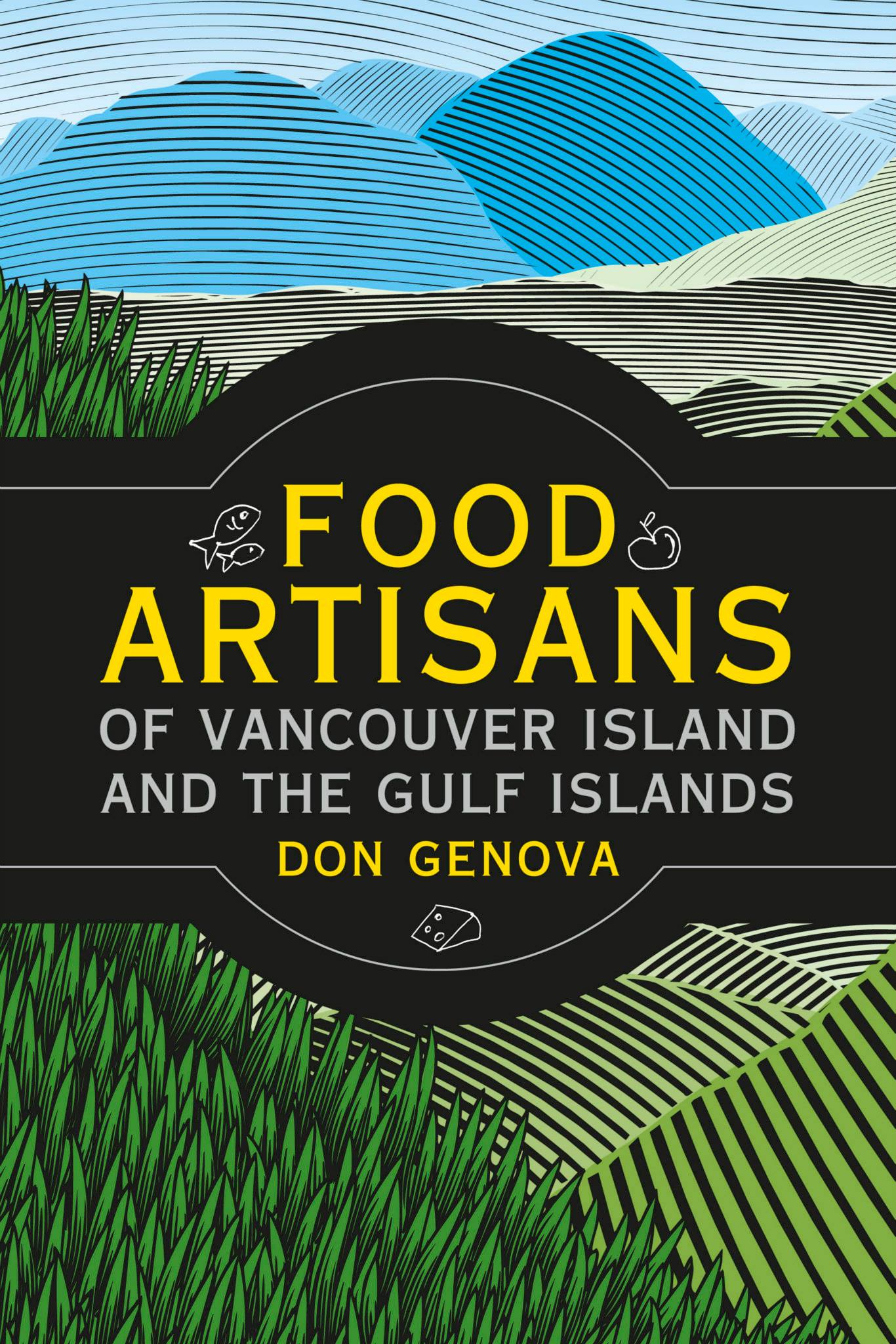 There was a bit of a tangy aroma in the CBC Victoria studio this afternoon as I presented a Mason jar of my homemade sauerkraut to All Points West host Jo-Ann Roberts. I made it from scratch with just five ingredients. Cabbage. Ginger. Garlic. Carrots. And salt. Squish them all together and wait a week or so and you get sauerkraut. If you remember back in April of this year I introduced you to Melanie Furman on Salt Spring Island and her Culturalive sauerkrauts and kimchis. Since I started eating her products I’ve taken a greater interest in these products, so when I got an invitation from Bootleg Betty to go to a sauerkraut making workshop in Duncan a couple of weeks ago of course I said yes.
There was a bit of a tangy aroma in the CBC Victoria studio this afternoon as I presented a Mason jar of my homemade sauerkraut to All Points West host Jo-Ann Roberts. I made it from scratch with just five ingredients. Cabbage. Ginger. Garlic. Carrots. And salt. Squish them all together and wait a week or so and you get sauerkraut. If you remember back in April of this year I introduced you to Melanie Furman on Salt Spring Island and her Culturalive sauerkrauts and kimchis. Since I started eating her products I’ve taken a greater interest in these products, so when I got an invitation from Bootleg Betty to go to a sauerkraut making workshop in Duncan a couple of weeks ago of course I said yes.
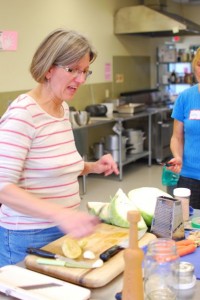
Holly Howe, aka ‘Bootleg Betty’
Bootleg Betty is really Holly Howe. Her husband came up the Bootleg Betty name since Holly teaches people how to make a fermented product, and the reference to bootlegging goes back to when making your own fermented alcohols like wine and beer was strictly illegal. She started eating sauerkraut for its healthy properties but became inspired to make her own after reading the book another recent Food Matters guest wrote. That would be Sally Fallon and her Nourishing Traditions cookbook. For the past ten years she’s been teaching these workshops to people who want to make their own kraut whether it’s because they want to save money or because they want to use the ingredients they prefer, as you can put many different kinds of vegetables and even some fruits into a sauerkraut.
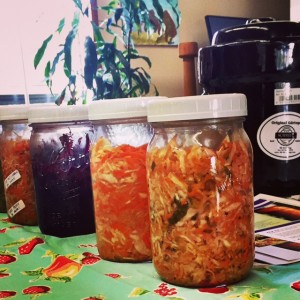
Holly’s different krauts
There were about half a dozen of us at a community kitchen in Duncan. Holly starts off with a bit of a lecture introducing us to the whole concept of fermented foods, which includes more than wine, beer and sauerkraut. Cider, mead, cheese, yogurt, sour cream, and cultured butter are all fermented foods, as are breads, the yeast in bread produces a fermentation, soy sauce and miso paste, vanilla and other bean products like coffee and chocolate are also fermented as part of their processing. We also tasted five different kinds of sauerkraut Holly had already made so we could figure out which one we would like to make when it came time to start chopping and shredding.
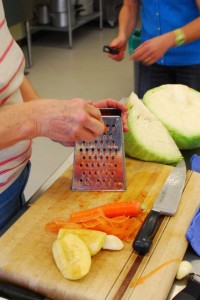
Slice, grate and chop!
They were all good so I had a hard time choosing. Ultimately I chose cabbage and ginger and carrots, but there was also cabbage and dill. Cabbage and carrots. Cabbage and beets and garlic and caraway seeds. And for kimchi, cabbage, carrots, green onion, ginger, garlic, radish and hot pepper flakes. And salt, it’s the salt that starts everything going. After you measure out the ingredients needed for your recipe into a big bowl, you add a tablespoon of non-iodized salt, and start mixing it together with your hands. Pretty soon the salt starts getting the veggies to release their liquids, and that’s when you’re ready to stuff a pound and a half of cabbage into a one-quart size Mason jar. You would never think it would fit, but it does. Holly showed us how to make sure the cabbage will stay under all the brine that’s produced and then you put on a plastic lid, and that’s it.
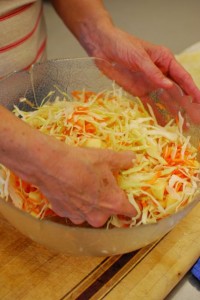
Mixing the kraut
You’ve spent a few minutes chopping your garlic and ginger and grating the carrots and shredding the garlic. But then you just wait. You put the jar in a shallow bowl and leave it at room temperature. More and more brine will be produced, and some of it will even seep out of the jar, which is why you put it into a little bowl. It kind of sings to you, strange little gurgling noises. It’s ready to eat in about a week, but to get the full benefits of the good bacteria being produced in the jar you want to let it ferment for up to four weeks before you put it in the fridge. I made my jar on October 26th and by today, November 6th, it tasted great. I’ll soon be ready to make another jar!
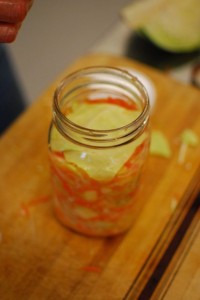
Getting ready to close the jar
If you really get hooked on kraut, you can purchase a special fermenting crock that will allow you to do up to five pounds at a time. Holly has two more workshops scheduled before Christmas, and if you’re further up island, the great people at Stir Cooking School in Lantzville near Nanaimo are doing a kimchi workshop in early January. Yes, people are already making plans for the New Year!

